Getting your snowmobile’s track adjusted correctly doesn’t have to be complicated. In this guide, we’ll show you the tools, step-by-step instructions, and troubleshooting tips for all major brands — Polaris, Ski‑Doo/Lynx, Arctic Cat, Yamaha, and more. If you do it right, your snowmobile will run great quickly. Why Track Tension Matters Track tension directly affects […]
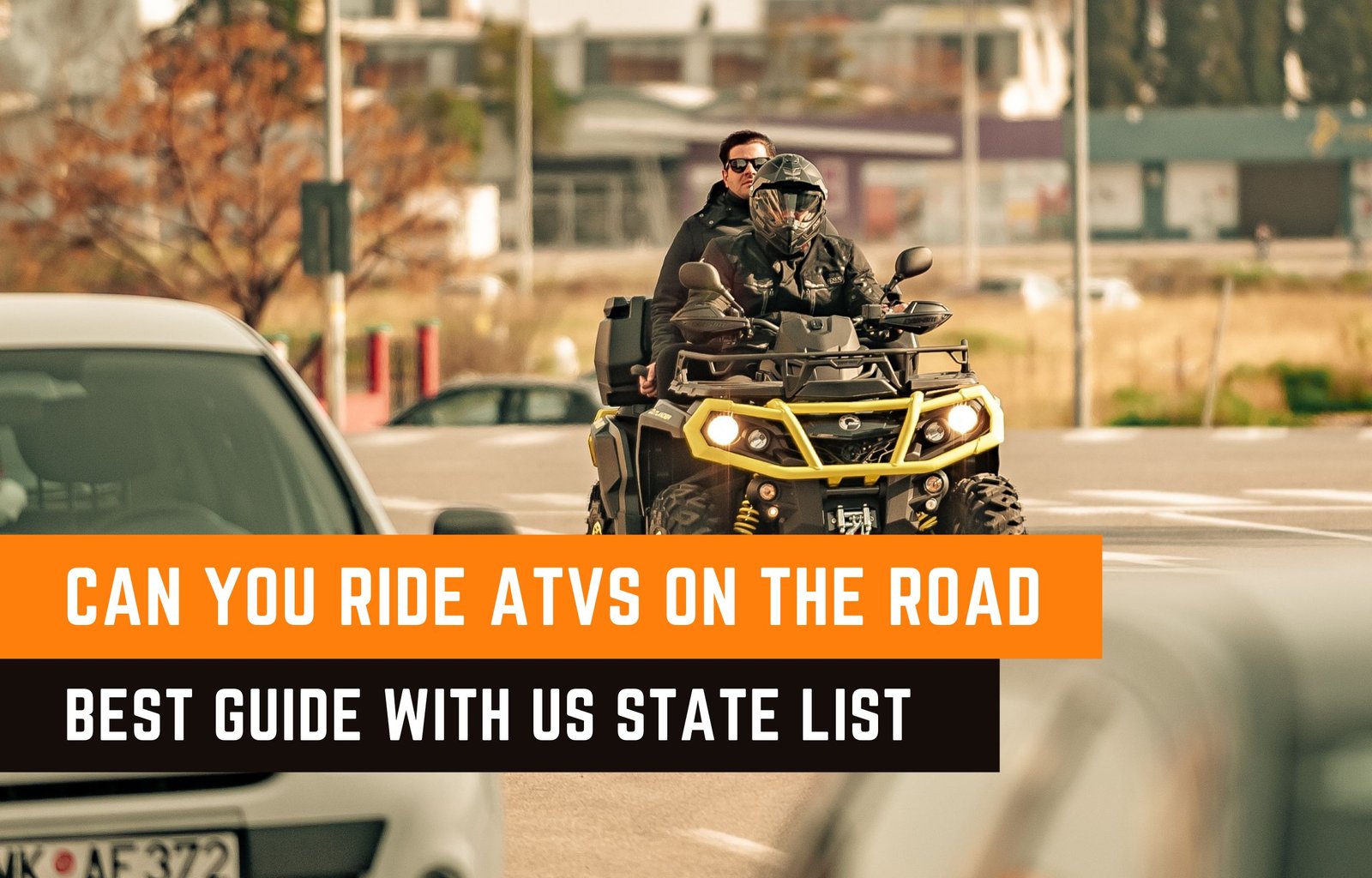
Can You Ride ATVs On The Road? Laws and Requirements 2025
As its name implies, an All-Terrain Vehicle (ATV), additionally called four-wheeler or quad, is a kind of bike with four wheels and also can work with almost all types of terrains. Whether it's sandy, snowy, or sloppy, you're guaranteed this vehicle can let you reach your destination. That is the main reason many people wonder if can you ride ATVs on the road or why can not be used on regional, state, and/or nationwide highways.
So, why are ATVs not road legal? Although ATVs are like motorbikes and also can be used for farming, entertainment, and competition objectives in some states as well as nations, they are not allowed to be made use of as an individual transportation system on public roads or highways due to safety.
In this article, we will talk about the states that can use ATVs in certain situations and the ATV driving policies in five states - California, Texas, New York, Hawaii, and Washington.
Table of Contents
Can You Ride ATVs On The Road Lawfully?
When it comes to riding an ATV on the road, the solution can be a bit uncertain. This is because there's not a regulation or law that applies to every area. Laws differ from state to state yet likewise city to city. Riding your ATV around a large city will likely cause a confrontation with the authorities.
Nonetheless, driving ATV on rural roads is much more common.
Some states have age restrictions for ATV operators when on public roads. For example, Arizona needs a license plate, horn, proof of obligation insurance coverage, and also emissions testing. In Delaware, that is banned all ATVs from public streets.
But, you can push your ATV in neutral on the roadway.
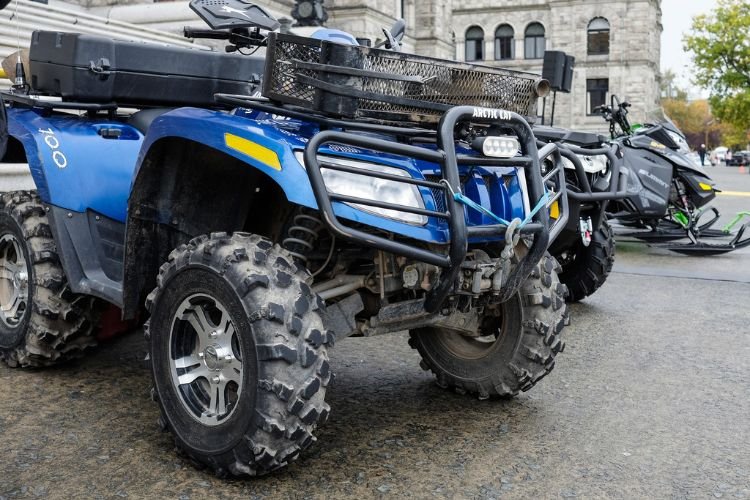
Is A License Necessary To Drive An ATV?
Laws vary from state to state, and they can also be confusing. As an example, no person under 18 can operate an ATV on any type of public land in California, consisting of areas. There are exceptions if the minor has actually taken a safety and security training course or has a state-issued safety and security certification. Alternatively, kids can be under the guidance of an adult that has a state-issued security certification for ATVs.
Whether or not you need a driver's license to drive an ATV actually depends on where you live and what you intend on using the ATV for.
For example, if you intend on making use of an ATV as part of your line of work, or as an instructor that will be taking various other ATV individuals on a trip, then you'll likely be required to finish an ATV certification course.
Not only does this regulation secure you as a driver, however it additionally secures your employer from any pending legal actions that can develop due to inappropriate use of the ATV.
This will also rely on the kind of ATV you're riding as well as where you're riding it. As an example, ATVs can generally travel on highways 500-2899, 7000 series highways, and highways that do not experience too much traffic.
If you're intending on riding your ATV on the road, then it's best to check in with your present rural or state laws to much better recognize whether a license will be needed.

Where Can You Drive ATVs?
Riding on public roadways can be a nuisance as well as is often unlawful. So, it's ideal to adhere to ATV routes, private lands, and also even off-roading parks. If you're picking to ride on private land, you should make sure you have authorization.
Exploring new lands on an ATV is fun. But it can end quickly when you encounter an angry landowner or law enforcement officer.
Which states allow ATVs on the road?
You'll come across lots of limitations regarding riding an ATV on roads. You can usually only do it in emergencies, for agricultural reasons, or if the ATV is street legal.
Right here are the states that permit ATVs on roadways in some capacity:
Alaska, Arizona, Arkansas, California, Colorado, Connecticut, Florida, Hawaii, Idaho, Illinois, Indiana, Iowa, Kansas, Kentucky, Louisiana, Maine, Michigan, Minnesota, Mississippi, Missouri, Montana, Nebraska, New Hampshire, New Mexico, New York, North Carolina, North Dakota, Ohio, Oklahoma, Pennsylvania, South Dakota, Tennessee, Texas, Utah, Vermont, Washington, West Virginia, Wisconsin, and Wyoming.
Although these states might enable ATVs on roadways in particular conditions, it's not all situations. Get in touch with your regional authorities before attempting to ride your ATV on any type of road.
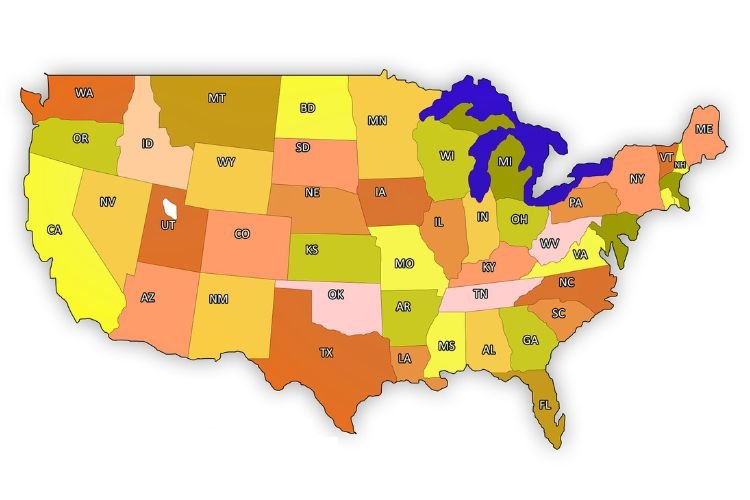
Are ATV Street Legal In California?
California has stringent policies restricting the operation of ATVs on public roads.
There are only a few scenarios where you are allowed to run an ATV on public roads in California:
- Going across a two-lane road at an angle of about 90 degrees;
- Crossing a road more than two lanes where such crossing is allowed by appropriate signage;
- On any street where the authorities have designated the ATV to drive under the following conditions: it is not dark, the street has an operable traffic light, the ATV has rubber tires, and you have a driver's license.
ATV equipment requirements in California:
- Headlamps. Headlamps are needed for the operation of ATVs from one-half hour after sundown to one-half hour prior to daybreak. The headlamp must be at least one white light routed toward the front of the car with sufficient light to reveal persons or automobiles at a distance of at least 200 feet.
- Taillamps. Taillamps are required for the procedure of ATVs from one-half hour after sunset to one-half hour before dawn. Taillamp must be at least one red light clearly visible from the rear of the vehicle
- Brakes. The brake system must remain in good working condition and appropriate to control the ATV in any type of problems upon it is being operated.
- Muffler. An ATV have to be equiped with an ample muffler or exhaust system that is not equipped with an intermediary, bypass or similar gadget.
- Spark Arrester. A spark arrester is called for on any type of ATV being operated on any forest-covered land, brush-covered land or grass-covered land. The spark arrester has to be certified and rated by the U.S. Forest Service.
Can you ride ATVs on the road in Virginia?
Under Virginia law, ATVs are classified as off-road vehicles and may not be operated on any public highway or public property—except in very limited circumstances. The only general exceptions are:
- Crossing a public highway, but only by the most direct route;
- Operation by law enforcement, firefighters, or emergency medical services during responses to emergencies.
A more specific exception applies in Buchanan and Tazewell Counties, where certain roads connecting trail systems allow ATV usage—but only under strict conditions. These include:
- Approval by the respective county Boards of Supervisors;
- Proper signage approved and installed per Virginia Department of Transportation standards;
- Limited operation during daylight hours, for a maximum of one mile between trails;
- A speed limit not exceeding 25 mph;
- Mandatory helmet use and compliance with standard traffic laws; and
- No passengers unless the ATV is designed for more than one rider.
Additionally, ATVs are exempt from these prohibitions and allowed to operate freely when used:
- For farming activities (e.g., agricultural work); or
- On private property with the landowner’s written permission, or by household members or employees.
Violation of these regulations may result in a civil penalty of up to $500, and may lead to seizure or impoundment of the vehicle under certain city ordinances.
Can you ride ATVs on the road in Tennessee?
Under Tennessee Code § 55-8-185, operation of ATVs (classified as off-highway motor vehicles) on public roads is strictly limited. ATVs may only legally cross a public highway:
- On a two-lane highway, operators may cross at approximately 90° where crossing can be made quickly and safely.
- On multi-lane or limited-access highways, crossings are permitted only at designated locations, clearly signed by transportation or local authorities.
As for actually riding along or on public roads, the general rule is prohibitive, with only limited exceptions:
- Certain local jurisdictions can, via 2/3 vote of the local governing body, designate unpaved roads or streets where ATVs are allowed—typically within an “adventure tourism district”. Such use must comply with safety requirements (helmet wearing, headlights/taillights, operation only between ½ hour after sunrise and ½ hour before sunset, appropriate signage, etc.), and cannot include state highways or interstates.
Additionally, specific roads in some counties (e.g., Anderson, Scott, Campbell, Morgan, Johnson, Perry) are expressly authorized for ATV use under local approval—often during specified time frames or events. For example, State Route 116 in Lake City, or Oneida & Western Railroad Road in Scott County, are among those permitted segments.
Other important notes:
- Crossing a highway is allowed under controlled, safe conditions as described, but riding along a road is illegal, unless on those specifically designated local routes.
- There is a helmet requirement for all riders and passengers when operating on public streets or roads. On designated routes, headlights and taillights must be illuminated during operation, and riding is restricted to daylight hours as noted above.
Are ATV Street Legal In Texas
Unfortunately, and also rather remarkably, Texas does not allow street-legal ATVs.
The only ATVs permitted on public roads in Texas are as follows:
- Farmer or herdsman riding less than 25 miles;
- Utility worker;
- Law enforcement officers.
Those that are able to operate an ATV on the street in Texas should keep headlights and taillights illuminated as well as affix a triangular orange flag atop an eight-foot pole connected to the back of the ATV.
Texas has a quite basic checklist of equipment for ATVs and operated public lands.
The required equipment includes the following:
- A working muffler.
- An operable braking system.
- Head and tail lights (from 1/2 hour before sunrise to 1/2 hour after sunset or during periods of reduced visibility).
- USFS-compliant spark arrester;
- Off-highway vehicle decals are issued by the State Parks and Wildlife Department.
- Safety helmets and goggles or other goggles must be worn by anyone operating an ATV on public property in Texas.
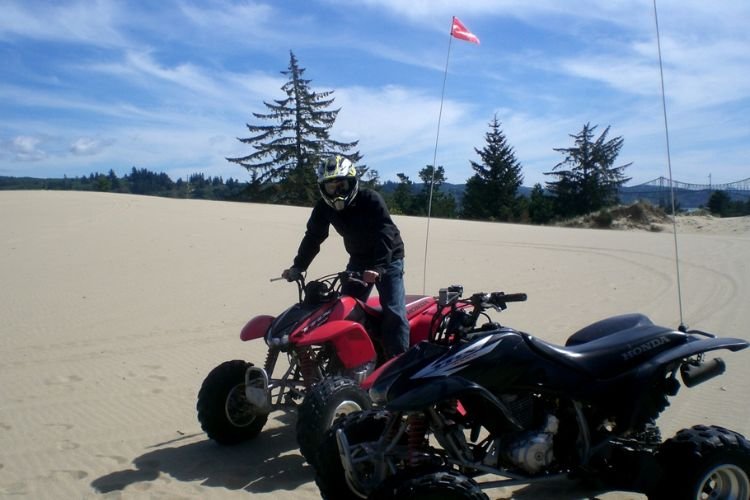
Are ATV Street Legal In New York
As one would expect, you aren't able to operate ATVs on public roads in New York except in very minimal situations. Those situations are posted on roads that are open for ATV use and at limited crossings.
Roadways posted available to going across generally are composed only of small portions of roadways that attach 2 ATV tracks.
For crossing a public road on an ATV, you should abide by the following:
- You cross the highway at an angle of approximately 90 levels, at a place where there are no blockages;
- You pertain to a total stop and also yield the right-of-way on the highway before crossing the street;
- If it is a divided highway, you go across only where it intersects with another street or highway;
- The highway you intend to cross is not an interstate highway or any controlled-access highway, such as the Thruway or a parkway at any moment.
When riding in New York, you or your ATV should be furnished with the following:
- Anybody on an ATV, including passengers, need to put on a USDOT-approved helmet.
- The brakes on the ATV should be in good working condition.
- An ATV must have a muffler in good operating condition that fulfills government requirements.
- An ATV needs to be equipped with a stimulate arrester approved by the united state Forest Service
- An ATV should have tires with at least 2/32nds of an inch tread as well as no noticeable breaks, cuts, exposed cords, bumps or lumps.
- Every ATV has to have a white headlight and also red taillight that is to be lit up when the maker is run from a half hour after sundown to a half-hour prior to sunrise.
Can you ride ATVs on the road in Arizona?
Yes, you can ride an ATV (also known as an OHV) on public roads in Arizona—but only if it has been made street-legal by meeting certain requirements.
Street-Legal Requirements
To ride an ATV on public roads in Arizona, your vehicle must:
- Be registered and display the OHV decal, and often a proper license plate indicating street-legal status.
- Be equipped with full safety and visibility gear, such as working headlights, taillight, brake light, rear reflector, horn, rearview mirror, braking system, muffler, and DOT-approved spark arrestor.
- Have a vehicle title and be registered with MVD (Motor Vehicle Division).
- Be appropriately insured, carrying at least the state’s minimum liability coverage.
- Be operated by someone with a valid driver’s license.
New Legal Updates (Effective 2025)
- As of January 1, 2025, completing a free OHV safety education course is required before registering or renewing the OHV decal.
- Helmet laws: Riders under age 18 must wear a DOT-approved helmet unless a car-like roll-over cage or child-restraint system is present. Adults are not legally required to wear helmets but are strongly advised to do so.
- DUI laws now apply to ATVs/ OHVs—you're subject to DUI enforcement just as in any other motor vehicle.
Road Usage Limitations
Even when street-legal, ATVs/OHVs are not allowed on highways or roads with higher speed limits. Typically, they’re limited to low-speed public roads, maintained dirt roads, or designated routes.
Can you ride ATVs on the road in West Virginia?
In West Virginia, ATVs generally cannot be driven on public roads, with limited exceptions.
Unregistered ATVs may only cross roads that have a centerline or more than two lanes—and only if the crossing is made at a 90-degree angle, at a safe, unobstructed location.
Riding along the shoulder of non-divided roads is permitted under narrowly defined conditions—typically within 10 miles of a residence or lodging, traveling under 25 mph, and using lights if after dark.
To ride legally on public roads, ATVs must be registered as Special Purpose Vehicles (SPVs). This entails obtaining DMV inspection, insurance, a street-legal plate, and ensuring the vehicle meets equipment standards like headlights, taillights, mirrors, turn signals, horn, muffler, and more.
SPVs are not allowed on controlled-access roads or interstates, and their use on marked highways is limited to a maximum of 20 miles unless local jurisdictions prohibit otherwise.
In short, you can ride on West Virginia roads only if your ATV is registered as a street-legal SPV and meets all requirements; otherwise, on-road use is limited to very specific crossings or short transitions.
Are ATV Street Legal In Hawaii
The operation of ATVs on public streets is generally prohibited in Hawaii, with the following exceptions:
- The ATV is being used as a farm tool;
- ATVs are operated by persons holding a current category (3) driver's license as defined in Section 286-102 or a commercial
- driver's license as defined in Part XIII.
- ATVs operate on streets of no more than two lanes and have a speed limit of no more than 35 miles per hour.
- ATVs are used where they travel between agricultural areas.
- ATVs are operated by city, county or state officials.
- ATVs are operated in counties with a population of less than half a million.
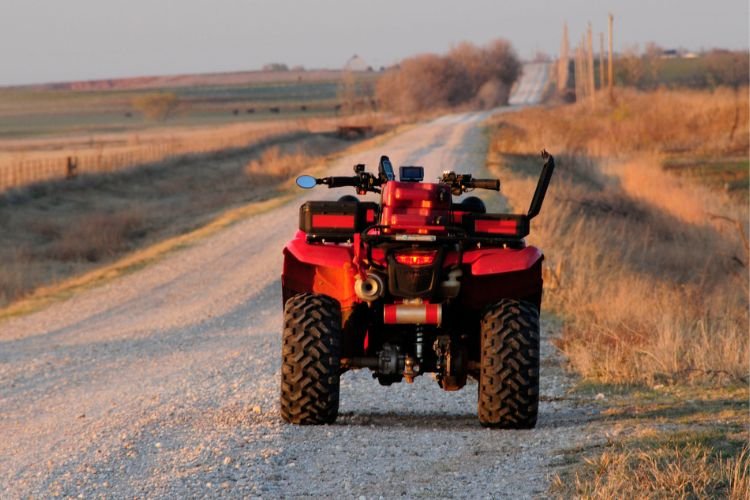
Can you ride ATVs on the road in Montana?
Yes, you can ride an ATV on public roads in Montana only if it’s made street-legal and carries a license plate, with all required equipment and proper authorization.
Otherwise, riding on roads is typically restricted to crossings or designated areas—not open road riding.
Riding ATVs on Public Roads in Montana
In Montana, ATVs must be street-legal and properly licensed to be ridden on public roads—this includes city streets, county roads, and state highways. That means:
- The vehicle needs full street-legal registration with a license plate attached to the rear.
- It must be equipped with required safety equipment like headlights, taillights, brakes, muffler, horn, mirrors, reflectors, etc., as laid out in Montana’s Quadricycle (street-legal UTV) requirements.
- Additionally, operating an OHV on public roads requires proper authorization:
- You must be licensed for road use.
- Some roads require explicit municipal or county authorization, especially city streets or county roads.
Off-Road Use without Full Street-Legal Setup
If your OHV (like an ATV) is not street-legal, you still have some limited road use:
- You may be allowed to cross public roads (except interstates) at a right angle and after stopping and yielding, often to access trails or forest roads—but only where permitted.
- Some Forest Service or BLM roads (not classified as regular public roads) may allow OHV use without full street-legal compliance, provided the OHV is registered for off-road/trail use and meets those agencies’ rules
Are ATV Street Legal In Washington
It is possible to get a street-legal ATV in Washington that allows you to ride on roads as allowed by each city and also the region. Normally, the roads you can ride on are those where the speed limit is 35 miles per hour or much less.
In order to run an ATV on a public road in Washington, you should get both an on-road and off-road tag when you sign up. And you must also have a valid driver's license.
To acquire an on-road tag, you must have your ATV inspected by a Washington-licensed WATV dealership or service center, who will certainly guarantee you have the equipment on your ATV:
- Headlight (must be illuminated if you are driving when traveling);
- Tail light;
- Stop lamps;
- Reflectors;
- Turn signals;
- Brakes;
- Mirror;
- Horn or alerting device;
- Muffler and spark arrester;
- Windshield;
Different Types of 4-Wheelers: An Informative Guide
What Is Difference Between UTV and ATV?
Four wheeler vs Quad vs ATV – What Is The Main Difference
Unleashing the Thrill: A Comprehensive Guide to ATV Camping Adventures
ATV Maintenance Checklist | Extend Your ATV Lifespan
ATV Safety Tips: Your Ultimate Guide to Safe Riding
Gas vs Electric ATVs: A Detailed Comparison
Top 5 Best Electric ATVs For Kids

Rodney L is a technical writer and product consultant with over a decade of experience in the motor industry. Rodney is a fan of performance machines that run fast and loud and an expert in all things custom. His numerous articles and write-ups are available at our knowledge base. Whether it’s something wrong with your motorcycle or you are building a custom bike, you can trust Rodney’s experience.
Motorcycle riding is all about the sense of freedom, adventure, and thrill of the open road. But come on—being connected when you ride isn't always an easy thing. Whether you're riding with a buddy, navigating traffic in the city, or long-distance riding, effective communication is crucial. That's where the Fodsports T5 and T6 come in, […]
If you're looking for a new motorcycle intercom system this year, Fodsports has something exciting in store. The company has launched two new Bluetooth helmet intercoms: T1 and T1 Pro. Both models bring upgraded features, sleek design, and high-definition audio quality for riders who want to stay connected, entertained, and safe on the road. But […]
Fodsports T1 and T1 Pro: The Newest Bluetooth Intercoms for Riders. Whether you’re cruising on highways, exploring rugged trails, or commuting daily, clear communication is key. Fodsports is thrilled to launch its latest Bluetooth intercoms: the T1 and T1 Pro. Built for riders who demand reliability, versatility, and crystal-clear sound, these devices redefine how you […]
Many riders who aren't so tall or ladies just starting to ride bikes need to pick out the best Motorcycles for Short Riders and Women. They gotta look for three key things: a seat that's not too high up, a bike that's not too heavy, and something that looks good enough to give them confidence. […]
Fodsports FX 60C vs FX30C Pro: What's new techs are the FX 60C bringing to us? Fodsports is a brand worth-mention for helmet communication and video recording. This brand has established itself as a key player with its innovative Bluetooth camera intercom systems. Recently, Fodsports has released a new camera intercom, the FX 60C. How […]
